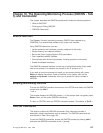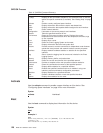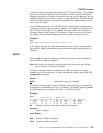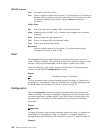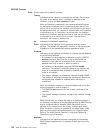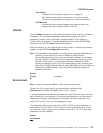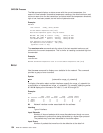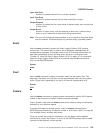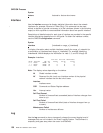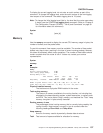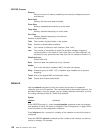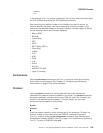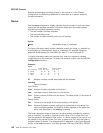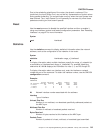
The list command displays a status screen with the current temperature, the
amount of time between successive temperature readings, the noted maximum and
minimum seen since the last reset/clear, and alerts when the temperature threshold,
high or low, has been passed, as well as the hysteresis value.
Example:
ENV>list
Time: 14:23:12 Sunday, January 09 2011
Current Ambient Temperature: 44C (111F)
Recalculate temperature approx. every 60 seconds.
Maximum: 48C (118F) at 11:47:32 Friday, January 07 2011
Minimum: 40C (104F) at 15:24:21 Saturday, January 08 2011
Last Max/Min Reset: 09:21:17 Thursday, January 06 2011
High Temperature Alarm Threshold: 85C (185F)
Low Temperature Alarm Threshold: -55C (-67F)
(Hysteresis value: +/- 5C))
The reset-max-min command sets the value of the last recorded maximum and
minimum to the current temperature. This is similar to resetting a standard high-low
thermometer.
Example
reset-max-min
Maximum and Minimum Temperature reset to current ambient temperature: 44C (111F)
Error
Use the error command to display error statistics for the network. This command
provides a group of error counters.
Syntax:
error
[
network#
or
range_of_network#
]
To display information about multiple interfaces, specify the range_of_network# (or
a combination of
network#
and
range_of_network#
). For example, specifying error
0 3 25-50 displays the information for nets 0, 3, and 25 through 50.
Example:
error
Input Input Input Input Output Output
Nt Interface Discards Errors Unk Proto Flow Drop Discards Errors
0 TKR/0 0 0 0000
1 PPP/0 0 0 0 0 0 0
2 PPP/1 0 0 0 0 0 0
Nt Network interface number associated with the software.
Interface
Type of interface.
Input Discards
Number of inbound packets which were discarded even though no errors
were detected to prevent their being deliverable to a higher-layer protocol.
The packets may have been discarded to free buffer space.
Input Errors
Number of packets that were found to be defective at the data link.
GWCON Process
134
MRS V3.2 Software User’s Guide




